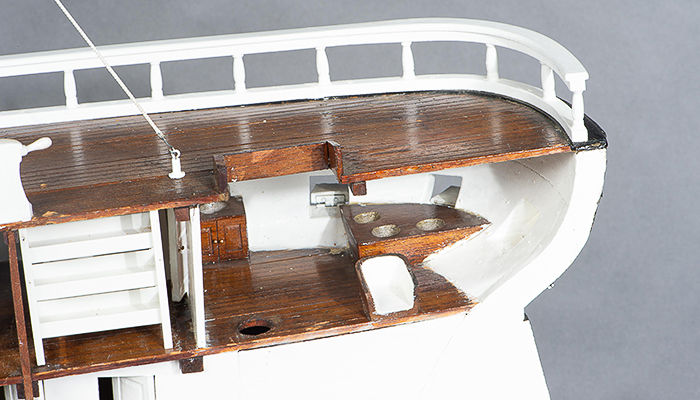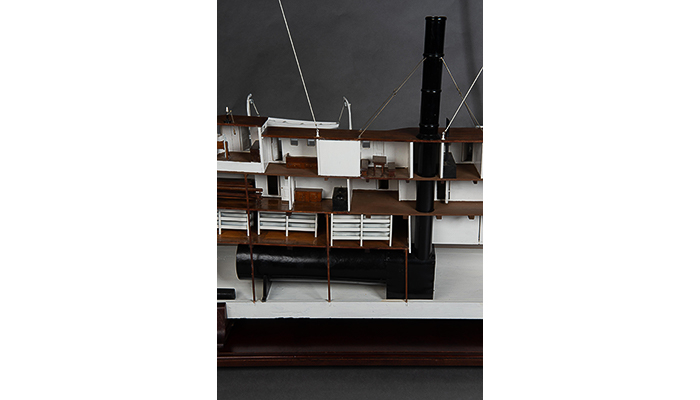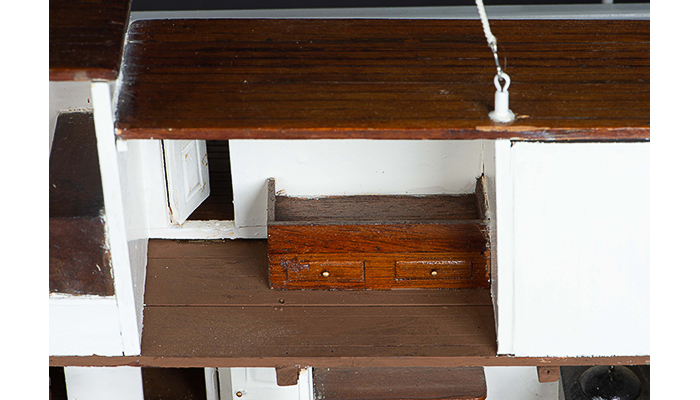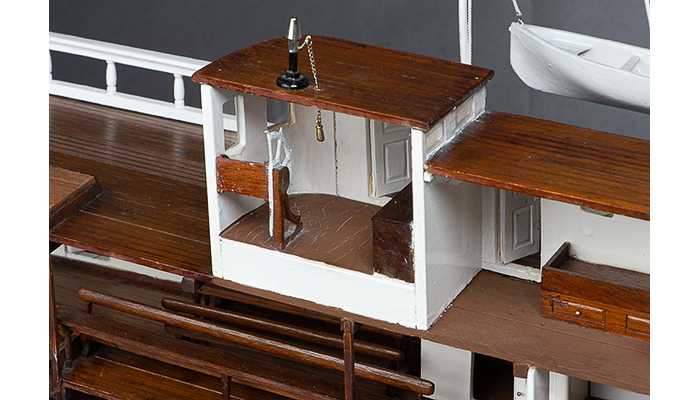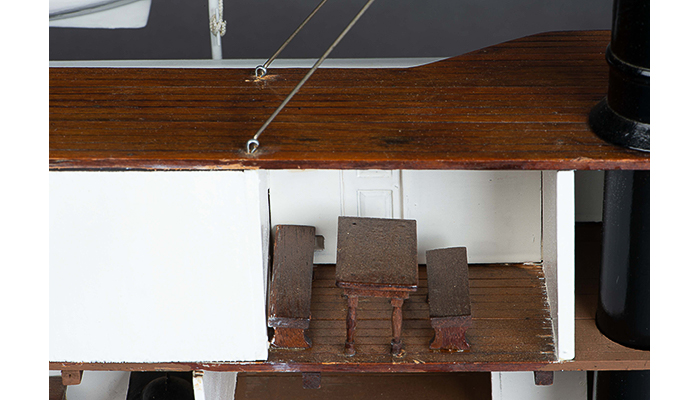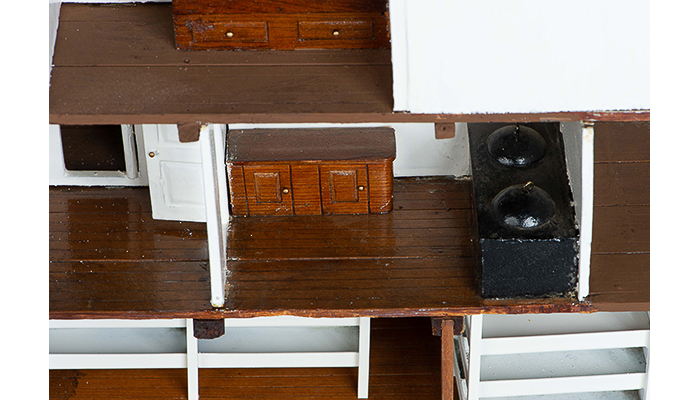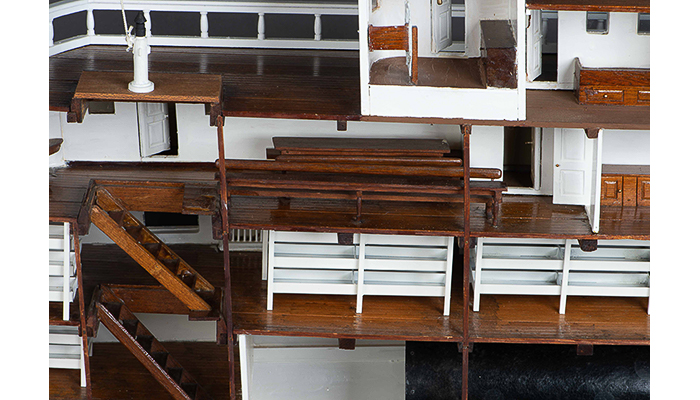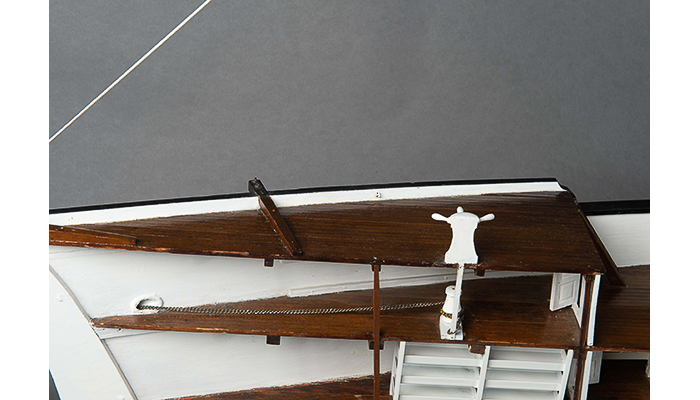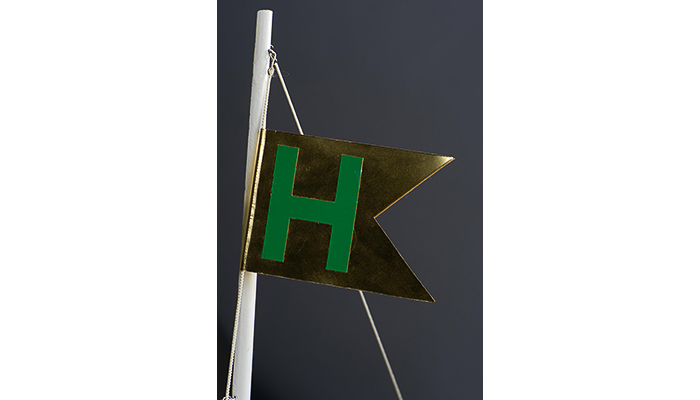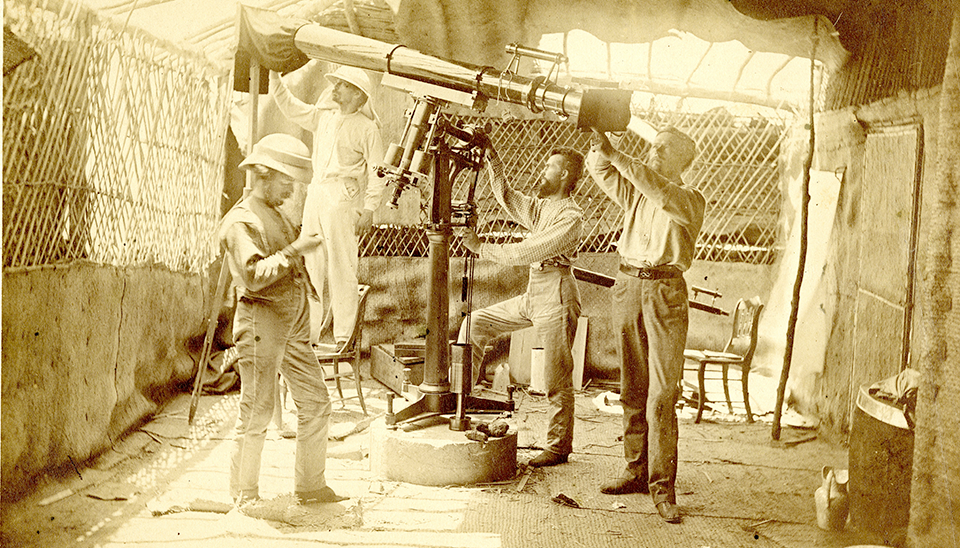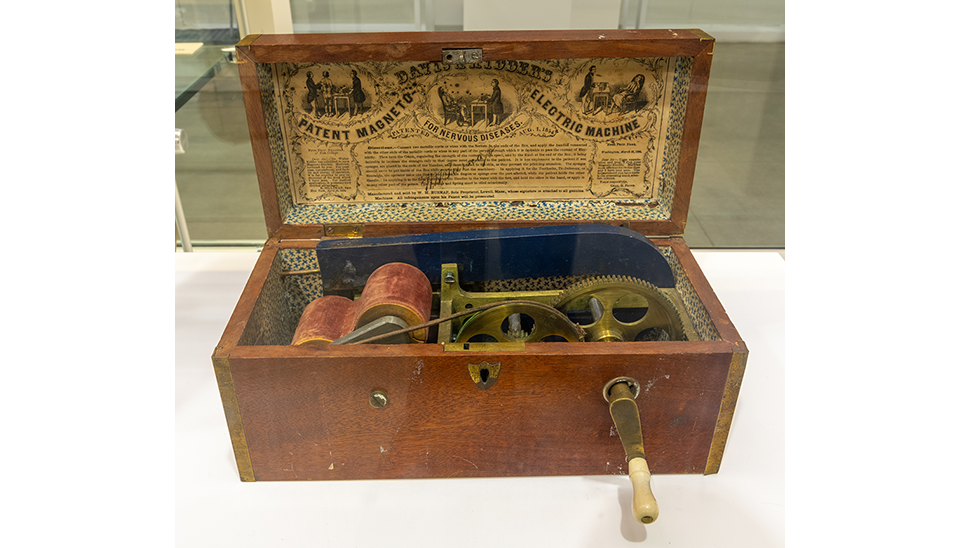One of the greatest challenges facing the Army Medical Department during the first three years of the American Civil War (1861-1865) was maintaining control over hospital ships. They did not have their own ships to transport wounded soldiers. Instead, they had to rely on ships borrowed from the U.S. Army Quartermaster's Corps that required refitting for medical uses. Furthermore, the U.S. Army Quartermaster's Corps frequently repossessed these vessels that they loaned to the Army Medical Department due to operational demands, stripping them of their medical transport configurations to allow for troop transport duty. To be returned for use by the Army Medical Department later, they would have to be refitted all over again.
A wood model of the J.K. Barnes on display at the National Museum of Health and Medicine allows for a detailed look at how a ship originally belonging to the Quartermaster's Corps was refitted as an Army Medical Department hospital ship.
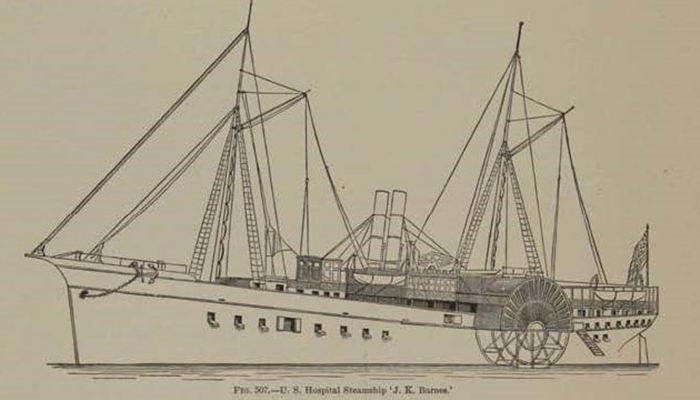
Illustration of U.S. Army Hospital Ship J.K. Barnes in "The Medical and Surgical History of the War of the Rebellion" (Volume 2, Part 3) [Washington: Government Printing Office, 1883].
The J.K. Barnes, named after Surgeon General Joseph K. Barnes, was one of 14 coastal steamships outfitted as a hospital ship to convey the wounded from field hospitals in the south along the Atlantic coast to hospitals in Alexandria, Philadelphia, and New York City. In November 1864, it was outfitted to carry 449 patients, under the supervision of naval architect Charles Hemje and Assistant Surgeon Alexander Hoff U.S. Army, who had experience managing the evacuation of wounded soldiers along the Mississippi River during the western campaigns of 1862 and 1863.
After the war, the vessel was sold as surplus to the Atlantic Mail Steamship Co., and it became the General J.K. Barnes. The ship made weekly trips from Savannah, Georgia to New York City until it foundered during a storm off Cape Hatteras on October 23, 1878.
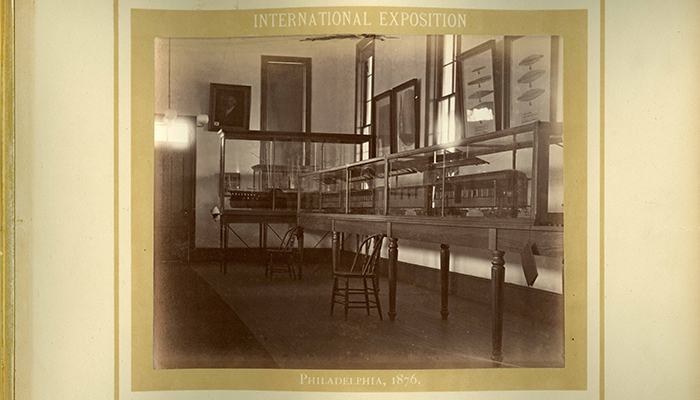
Exhibit hall at the Centennial Exposition of 1876 in Philadelphia that presented models of hospital trains, buildings and ships, including the model of the J.K. Barnes (background). The exhibit hall described the national network of transportation and hospitals that evolved during the war. (OHA76-001-08)
Representing one of the best adapted hospital ships of the period, a model of the J.K. Barnes was produced for the Centennial Exposition of 1876 in Philadelphia. It was used to show the public an ideal example of contemporary coastal steamships transporting wounded soldiers; the model of the J.K. Barnes detailed the intricacies involved in outfitting a vessel as a hospital ship.
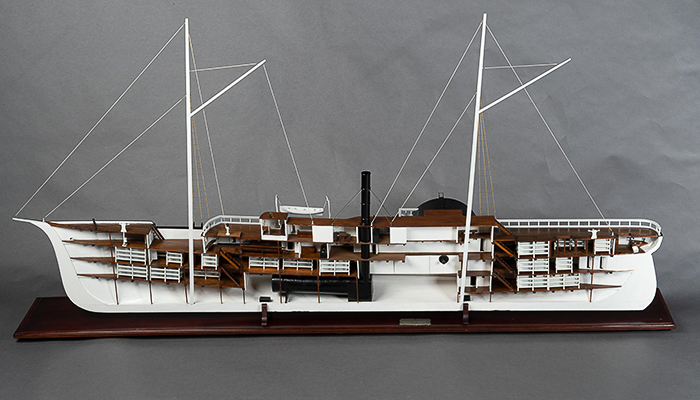
Interior cutaway of the model of the U.S. Army Hospital Ship J.K. Barnes. (181217-D-D0458-1018: NMHM photo)
The 8-foot model of the J.K. Barnes was identical to its 223-foot original, having been crafted by the same architect, Hemje. The cutaway model shows everything, from its exterior details like the paddlewheel, to the lower deck hospital wards and engine room. The model also displays the upper deck bathrooms, general cafeteria and galley, and the main deck officer's cafeteria, cabin, bathrooms, and wheelhouse. Hemje's attention to detail also included the hoist used to raise and lower the anchor and a yellow flag with a green 'H' at the top of a mast that was an identifier for U.S. Army hospitals.
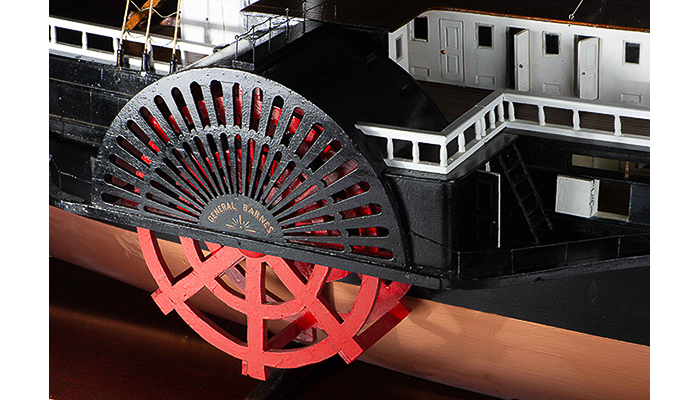
However, the majority of the ship's space was divided into the different hospital wards, which were designated by letters A to E.
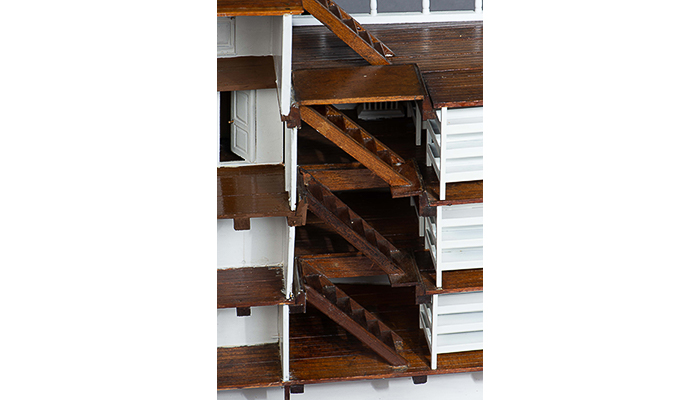
This detail shows the lower deck hatch and ladders between the spar deck ward A, gun deck wards C, D, and orlop (lowest) deck ward E of the model of the U.S. Army Hospital Ship J.K. Barnes.( 181217-D-D0458-1004: NMHM photo)
Inside the hull on multiple levels, the patient rooms contained tightly-packed three-tiered bunks securely mounted to the different ship decks. Over the wards, skylights were used for ventilation.
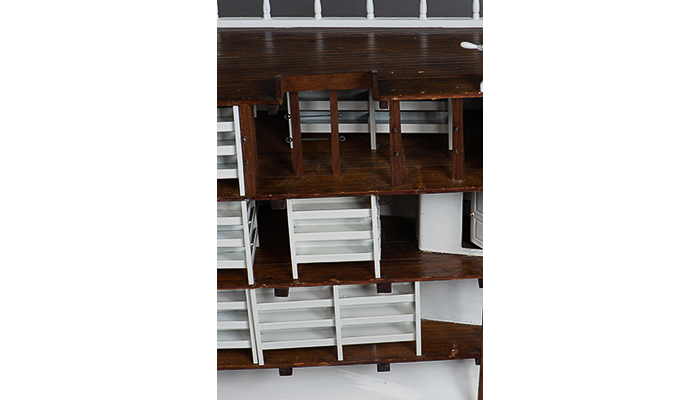
This detail shows the lower deck skylight used for ventilation over the hospital wards A, C, D, and E inside the hull on the model of the U.S. Army Hospital Ship J.K. Barnes. (181217-D-D0458-1002: NMHM photo)
Intended to show the public the evolution of United States hospital ships, the J.K. Barnes model documented the internal and external configuration of a hospital ship based on lessons learned during the Civil War.
The J.K. Barnes model, as well as the museum's model of Civil War hospital ship D.A. January, will go on display as part of a new exhibit, "United States Hospital Ships," opening October 23, 2019. The exhibit will also feature models of the hospital ships Solace (AH-2), Solace (AH-5), and Comfort (AH-19), on loan from the Naval Sea Systems Command, and will be open through mid-March, 2020.
References
Explore the Otis Historical Archives and Historical Collections to see more materials relating to United States hospital ships:
Relevant Links:
To Bind Up the Nation's Wounds: Evacuation and Hospitalization
100 Years of Military Medical Innovations at the 1876 International Exposition
USNS Comfort 2019 Missions
https://www.southcom.mil/MEDIA/NEWS-ARTICLES/Tag/141016/usns-comfort-2019/
Woodward, J.J. "Hospital of the Medical Department, United States Army: description of the models of hospital steam vessels exhibited in Room No. 2."
https://collections.nlm.nih.gov/catalog/nlm:nlmuid-101214851-bk



